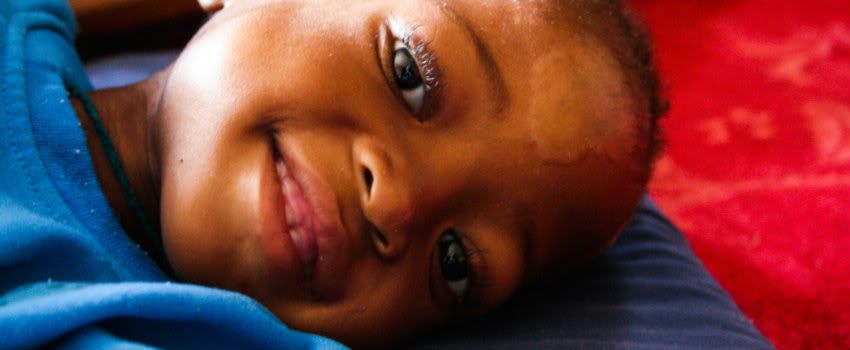Although Rachel already touched on the triplets in her last post, I hope you'll indulge me in sharing my perspective. I think the story of these triplets has had a big impact on all of us at TTL, one that really motivates us to continue the work we do here.
Julie
_____
As I duck through the
doorway, I am met repeatedly by hushed Sesotho greetings, "Lumela, ausi."
Hello, sister.
My sun-drenched eyes cannot yet make out how many
people gather in the dark rondavel.
I know we are here to check on the health of a
newly born baby, but I have missed many of the details in the rapid Sesotho
conversation that have lead us to this rural mountain village.
As my eyes adjust I take in a sisterhood of woman
gathered together...the hardships and joys of a remote village life are
apparent on their faces, in their dress, and in the obvious bond they share.
It is not until sometime later that I notice a
young woman leaning against the rondavel wall.
The pains and exhaustion of childbirth linger on
her face.
The outreach worker I am with explains to the
women that we are here to offer our assistance because we have heard through
the network of Village Health Workers that there is a baby in distress.
The women nod in understanding.
It is clear they have firsthand knowledge of
Lesotho's devastating infant mortality rate.
One of the women, who appears to be the
grandmother, slowly begins to pull back a pile of blankets gathered in the
center of the room.
From the folds, she pulls a tiny, sleeping
baby...at that moment I'm sure it's the smallest baby I've ever seen.
I look up at the young woman still resting against
the rondavel's dirt wall.
I imagine her giving birth in this same
rondavel...no doctors, no nurses, no pain medication.
I imagine the boundless strength and courage that
must have taken.
We carefully weigh the baby, measure her length,
and take her middle arm circumference...all standard measures used to quickly
assess malnutrition.
All the while I wonder if you can assess
malnutrition in a baby who, I've come to learn, is only five days old.
As I stare at the tiny features of this infant, I
see the grandmother pull another tiny figure from the pile of blankets....a
third quickly follows.
Triplets.
My breath catches.
This mother - at just eighteen years old - gave
birth at home...in a remote village...in one of the poorest countries in the
world...to triplets.
At no point did she receive an ultra sound to let
her know to expect three children.
Three girls.
Three tiny baby girls.
More rushed conversations in Sesotho follow.
The mother isn't producing enough milk to sustain
three babies.
Their small size greatly concerns everyone huddled
in the rondavel.
It is soon decided that we must take these five
day old triplets to the hospital in Mokhotlong.
Images of the roads we traversed to get to this
village flash through my mind.
Our outreach vehicles routinely traverse
boulder-strewn hillsides to reach those in need.
But the roads we have just traveled are some of
the worst in the region.
We have just spent four hours bumping up and
down...our heads practically hitting the ceiling....lurching left and
right...as our four-wheel drive vehicle lumbered it's way to this small village.
I can't imagine how we will possibly make this
treacherous journey with three infants.
No car-seats....just cradling these tiny girls in
our arms, hoping to shield them from each jolt of the car.
We leave the rondavel followed by the sisterhood
of women - the grandmother and mother nestled in amongst the women who have
been there at each pivotal moment of their lives - and weave our way down
the mountain to our vehicle.
The infants are tied snuggly to the women's backs,
in the traditional Basotho style.
When we reach the car, it is decided that the
mother and grandmother will travel to the hospital with us.
They will each hold a baby and I will hold the
third.
As the grandmother places her tiny granddaughter
in my arms, our eyes meet.
We do not speak the same language.
I cannot communicate to her all the things I am
feeling right now, nor she to I.
But I do my best through smiles and gestures to
express my gratitude that she should trust me with one of her most prized
possessions.
I pull the baby close, the blanket thick with the
smells of the rondavel ... woodsmoke, dust, and roasted maize.
As our car pulls away from this small village, I
reflect.
I reflect on the profound difference between my
life at eighteen and this young mother's.
I reflect on the conditions that have allowed HIV,
TB, and malnutrition to pillage this small nation.
I am brought back to the present by a particularly
sharp jolt of the car as it lumbers over yet another boulder.
I look down at the bundle in my arms.
These twists and turns, bumps and bends seem to faze five-day old slumbering babies little...sleep is much too pressing a need.
As we make our way through the mountains of
Mokhotlong toward the hospital, I am thankful that so many people have come
together to help these babies.
From the village women, to the hospital doctors,
to the dedicated staff of Touching Tiny Lives, each will play an integral role
in helping these triplets become laughing, chubby toddlers...inquisitive,
jubilant teenagers...and someday, strong, devoted parents themselves.
While uncertainty reigns in these little lives for
now, the love and collaboration of those around them overflows.
In reality, it is hard to say whether this will be
enough.
But in this moment, I feel hopeful...because how
else can you feel with a 5 day-old baby in your arms?














